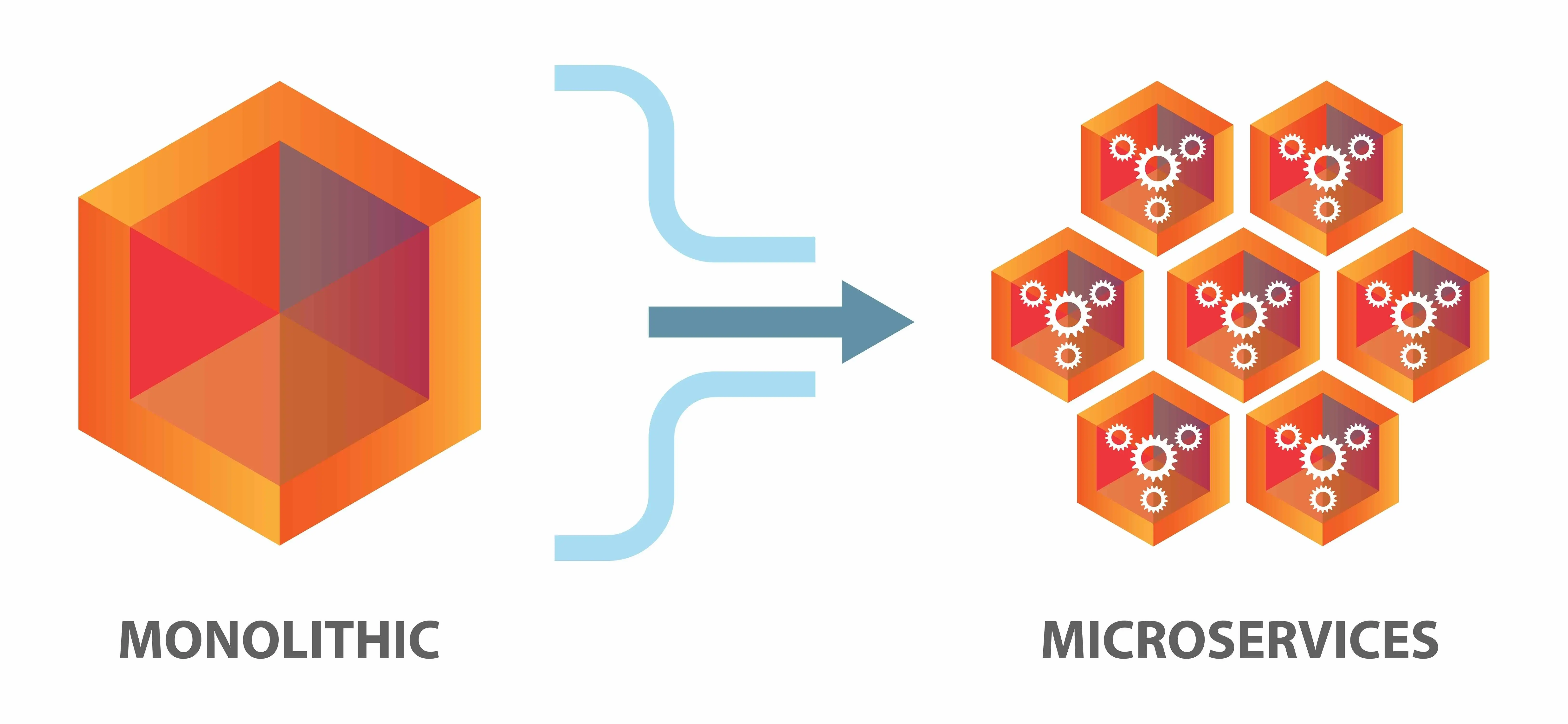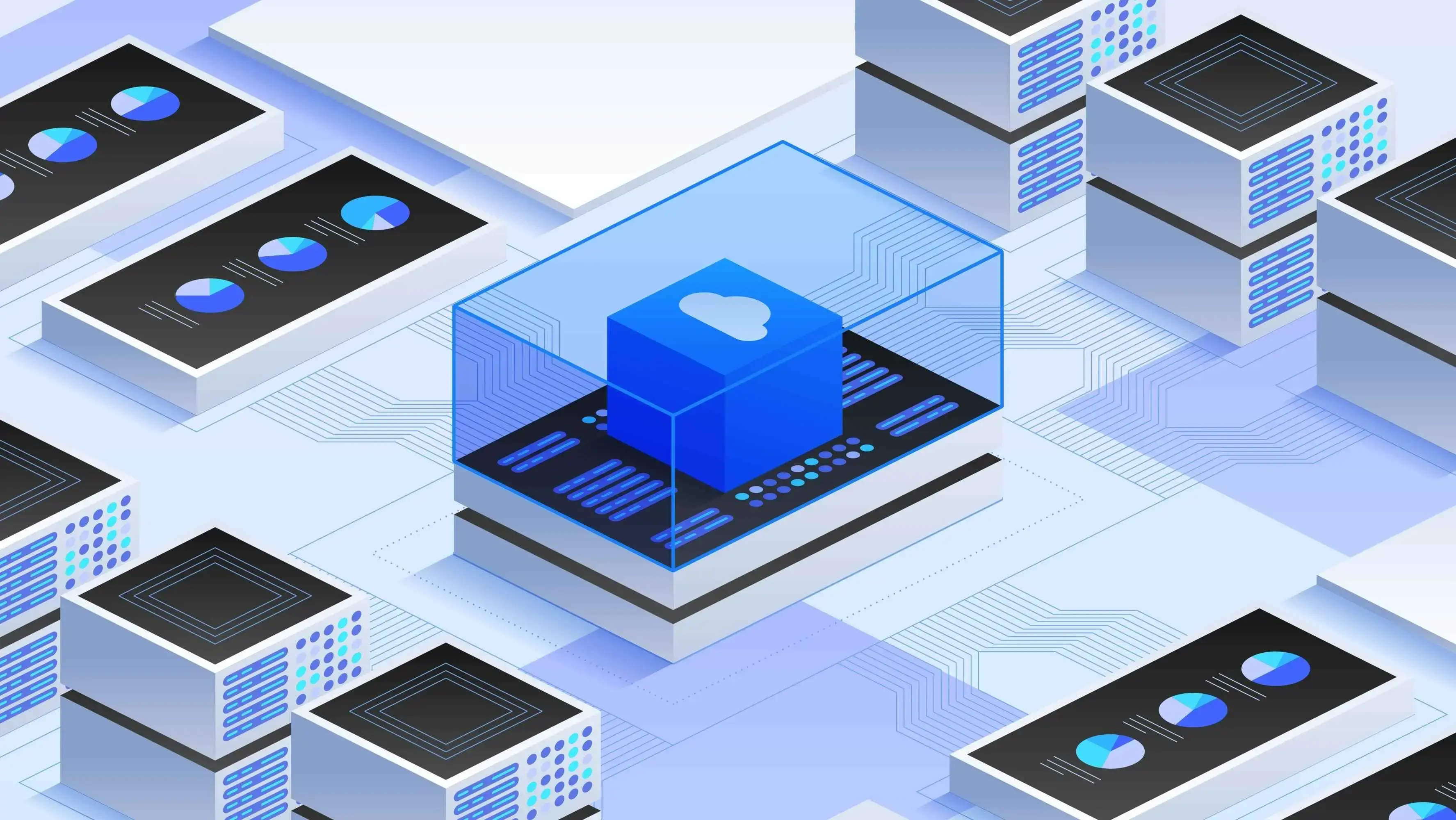Software architecture refers to the high-level structure of a software system, the blueprint that defines how components are organized and how they interact. Just like a well-designed building, the right architecture sets the foundation for scalability, maintainability, and performance.
Choosing the right architecture model is one of the most critical decisions in software development. It affects not only how your application is built and maintained but also how it scales, evolves, and responds to business needs over time.
This article compares two fundamental architectural approaches: Monolithic and Microservices. You will learn how they differ, explore their benefits and drawbacks, and discover how to decide which model suits your project goals and team capabilities best.
What Is Monolithic Architecture?
Monolithic architecture is a traditional software design model where all core functionalities user interface, business logic, and data handling are developed and deployed as a single, unified application.
All modules are bundled into one executable, relying on direct method calls for internal communication and sharing a centralized database. As a result, even minor changes often require redeploying the entire system. This approach is especially suitable for small teams, offering a streamlined development process and simplified management.
Monolithic apps typically use integrated tech stacks like HTML, CSS, and JavaScript for the frontend; Java, C#, PHP, Python, or Ruby for the backend; and databases such as MySQL or PostgreSQL, hosted on servers like Apache, Nginx, or Tomcat, making early-stage development and testing efficient.
What Is Microservices Architecture?
Microservices architecture is a modern design approach where an application is divided into small, independent services, each handling a specific business function. These services run in separate processes and communicate via lightweight protocols like HTTP APIs or message queues.
Decentralized and loosely coupled, microservices allow teams to develop, deploy, and scale components independently using different tech stacks. Each service manages its own data, reducing cross-service dependencies and enhancing fault isolation.
Deployment typically involves containerization (e.g., Docker), orchestration (e.g., Kubernetes), and CI/CD pipelines, along with centralized logging and distributed tracing for visibility. This architecture empowers teams to work autonomously and supports greater scalability, agility, and resilience.
Differences between Monolithic and Microservices Architecture
| Aspect | Monolithic Architecture | Microservices Architecture |
|---|---|---|
| Deployment Strategy | Single unit; entire application is deployed together | Independent deployment of each service |
| Scalability | Scales as a whole; inefficient for specific components | Each service can scale individually based on demand |
| Fault Tolerance | Failure in one module can affect the entire system | Failure is isolated to the affected service; others remain functional |
| Technology Stack Flexibility | Limited to one tech stack across the application | Different services can use different languages, frameworks, and tools |
| Development & Team Structure | Centralized teams working on a shared codebase | Small, autonomous teams working on individual services |
Pros and Cons of Monolithic Architecture
Pros
Cons
Pros of Monolithic Architecture
Simple development and deployment: Monolithic applications are straightforward to build and deploy because everything is contained within one codebase. This simplicity is especially helpful for teams that need to launch quickly.
Centralized logging and monitoring: All logs and performance metrics are in one place, making system monitoring more direct. Troubleshooting issues does not require tracing across multiple services.
Easier debugging: With all functionality in one codebase, developers can identify and resolve bugs more easily. There’s no need to coordinate across service boundaries.
Lower DevOps and infrastructure demands: You do not need advanced tools or complex orchestration to run a monolith. Basic deployment pipelines and infrastructure are often sufficient.
Suitable for small teams and simple projects: Monoliths reduce coordination overhead, making them ideal for lean teams. They are also well-suited for straightforward apps with limited feature sets.
Cons of Monolithic Architecture
Poor scalability for individual features: You must scale the entire application even if only one feature needs more resources. This can lead to inefficient use of infrastructure.
Redeployment required for every change: Even small updates require redeploying the whole system. This increases downtime risk and delays releases.
Tight coupling increases complexity over time: As more features are added, dependencies between components become harder to manage. This makes maintenance and upgrades more error-prone.
Limited tech stack flexibility: Since all parts must work within the same environment, adopting new tools or languages is difficult. Innovation is often slowed down by legacy constraints.
Vulnerable to system-wide failure: A crash in one part of the codebase can bring down the entire application. This poses a significant risk in high-availability environments.
Pros and Cons of Microservices Architecture
Pros
Cons
Pros of Microservices Architecture
Independent scalability of services: Each microservice can scale according to its own usage patterns. This allows for more efficient resource allocation.
Technology stack flexibility: Teams can choose the best language or framework for their specific service. This promotes innovation and improves performance.
Faster, independent deployments: Services can be built, tested, and deployed separately. This reduces release bottlenecks and improves time to market.
Better fault isolation: If one service fails, it does not take the whole system down. This enhances reliability and system resilience.
Supports CI/CD pipelines effectively: Microservices fit well with automated testing and continuous delivery workflows. This encourages rapid, safe, and frequent releases.
Cons of Microservices Architecture
Complex deployment and orchestration: Managing many services requires tools like Docker and Kubernetes. This adds setup and operational complexity.
Higher DevOps workload: Each service has its deployment, monitoring, and scaling needs. This increases the demand for DevOps automation and expertise.
Challenging system-wide monitoring: With logs and metrics spread across services, monitoring becomes more fragmented. You need advanced tools for centralized visibility.
More difficult testing processes: Testing microservices involves validating interactions between many components. This adds layers of complexity to integration and end-to-end testing.
Risk of inconsistent APIs and duplicated data: Without careful design, services may duplicate logic or data. Inconsistencies can lead to integration issues and reduced system coherence.
Challenges in Transitioning from Monolithic to Microservices
1. Identifying Service Boundaries
One of the first challenges in transitioning is determining how to divide the monolith into meaningful, autonomous services. This requires a deep understanding of your business domains and dependencies across the system.
Using Domain-Driven Design helps define clear, logical service boundaries, but it demands time and collaboration across teams. Poorly defined services can lead to tightly coupled microservices, defeating the purpose of modularity. Getting this step wrong can cause cascading complexity down the road.
2. Managing Data Decoupling
Monolithic systems usually rely on a shared database, but microservices require each service to manage its data. Moving to a distributed data model means breaking existing relationships and redesigning how data flows between services.
This often introduces data duplication and eventual consistency, which developers must learn to handle. Migrating without breaking functionality or losing data integrity is technically demanding. It is one of the most sensitive parts of the transition and often slows progress significantly.
3. Increased Deployment and Infrastructure Complexity
Deploying a monolith is relatively simple, but microservices introduce many more components to configure and manage. Each service must be containerized and deployed independently, often requiring tools like Docker, Kubernetes, and CI/CD pipelines.
With dozens or even hundreds of services, orchestration, versioning, and rollback procedures become more difficult to maintain. Network policies, service discovery, and load balancing need to be handled with care to avoid downtime. Without strong DevOps practices, deployment becomes chaotic and error-prone.
4. Communication and Integration Overhead
In a monolithic app, components interact through direct function calls, but in microservices, all communication happens over APIs or message queues. This introduces latency, increases the risk of failure, and requires implementing retry logic, timeouts, and circuit breakers.
Maintaining secure, reliable, and consistent communication across services becomes a major engineering concern. You must also ensure backward compatibility in APIs to avoid breaking dependent services. The added communication layer requires more design thinking and testing than most teams anticipate.
5. Observability and Monitoring Challenges
With so many distributed components, gaining visibility into the system becomes significantly harder. Traditional logging and monitoring tools are insufficient for tracking requests across services. You will need centralized logging, metrics collection, and distributed tracing tools like ELK Stack, Prometheus, and Jaeger to detect and diagnose issues.
Setting up effective alerting and dashboards for each service adds another layer of operational effort. Without strong observability, debugging production issues in microservices can feel like searching for a needle in a haystack.
Which Architecture Should You Choose?

Choosing Between Monolithic and Microservices Architecture
Choosing between monolithic and microservices architecture depends on your project’s size, goals, and constraints. Use this simple checklist to guide your decision.
Choose Monolithic Architecture If:
Small or solo development team: Smaller teams benefit from the simplicity of a unified codebase and fewer moving parts. Collaboration is easier when all components are maintained in one place.
Simple or MVP application: For minimal features and fast iteration, a monolithic setup is more efficient. It allows you to quickly validate ideas without complex infrastructure.
Quick launch with minimal infrastructure: Monolithic applications require fewer tools, making deployment faster and easier. This is ideal for projects needing rapid delivery.
No need for independent scaling: If your application components share similar load patterns, scaling the entire app as a whole is sufficient. You will not need the overhead of managing individual service loads.
Minimal DevOps complexity: A single codebase reduces the burden on deployment pipelines and system monitoring. This keeps DevOps overhead low and manageable.
Preference for centralized codebase: With everything in one place, teams can maintain consistency and simplify updates. Deployment is unified, reducing potential integration issues.
Limited budget or short-term project: Monolithic architecture is cost-effective in the early stages. It avoids the infrastructure costs associated with service orchestration and distributed systems.
Choose Microservices Architecture If:
Large-scale or complex system: Breaking down complex functionality into smaller services makes development more manageable. Each service can evolve independently to meet changing needs.
Need for independent scaling: Different parts of your system can scale separately based on demand. This results in more efficient resource usage and cost control.
Distributed or specialized teams: Teams can work independently on different services without stepping on each other’s code. This improves productivity and reduces cross-team dependencies.
High availability and fault isolation: A failure in one service will not bring down the whole application. This leads to greater system reliability and a better user experience.
Focus on long-term modular growth: Microservices are better suited for evolving systems that need modular expansion. They support adding new features without affecting the entire app.
Comfort with modern DevOps tools: Running microservices successfully depends on tools like Docker, Kubernetes, and automated CI/CD pipelines. Teams must be ready to manage complexity at scale.
Desire for tech stack flexibility: Each service can use the language, framework, or database best suited for its task. This gives teams more freedom to innovate and optimize performance.
Real-Life Examples
1. Netflix
Netflix transitioned from a monolithic architecture to microservices to support its growing user base and demand for high availability. The shift allowed them to scale different parts of the system independently, like recommendation engines and video streaming.
It also improved fault tolerance if one service fails, others continue functioning. Today, Netflix is a textbook example of how microservices enable global scalability and rapid innovation.
2. Amazon
Amazon adopted microservices to manage the complexity of its massive online marketplace. Each service, such as order processing, payment, inventory, and search, operates independently and communicates via APIs.
This modularity allows Amazon teams to innovate and release new features frequently without disrupting the entire platform. The architecture also supports exceptional uptime and resilience under heavy traffic.
3. Uber
Uber shifted from a monolith to microservices to handle its growing and diverse operations. Key services like ride matching, pricing, payments, and driver tracking are now isolated and independently deployable.
This separation improves scalability and lets regional teams optimize services based on local needs. Microservices help Uber maintain real-time performance across cities worldwide.
4. Spotify
Spotify leverages microservices to deliver features like music discovery, playlist management, and social sharing through separate services. This architecture allows teams to work autonomously and iterate quickly on different parts of the user experience.
Services can be updated or scaled without affecting the entire platform. It also supports better fault isolation and feature experimentation.
Conclusion
Both monolithic and microservices architectures offer unique strengths and trade-offs. While monoliths are faster to build and deploy, they may become inflexible as your system grows.
Microservices deliver long-term agility and scalability but require a higher level of operational maturity. The best approach is one that matches your team's skills, your project’s complexity, and your business goals.
Frequently Asked Questions
What is the key difference between monolithic vs microservices architecture in terms of software component organization?
In monolithic architecture, all the components such as the user interface, business logic, and data access are part of a single unit and share the same codebase. In contrast, microservices architecture breaks the application into independently deployable services where each software component handles a particular job.
How does the microservices approach support multiple development teams in software engineering?
The microservices approach allows multiple development teams to work on independent services simultaneously without interfering with other services. This supports agile development processes and faster development cycles, especially in complex applications.
Why is inter-service communication important in distributed systems like microservices applications?
In distributed systems, communication mechanisms ensure individual services interact reliably to deliver complete business capabilities. Microservices applications rely on lightweight communication protocols for effective service coordination and integration.
When is the monolithic approach still preferred in modern software development?
The monolithic approach is often preferred in early-stage software development or when building monolith applications that do not require technology diversity or independent development. It suits teams working with a traditional software development model and offers simplicity in managing the entire code base and a central logging system.

Yetunde Salami is a seasoned technical writer with expertise in the hosting industry. With 8 years of experience in the field, she has a deep understanding of complex technical concepts and the ability to communicate them clearly and concisely to a wide range of audiences. At Verpex Hosting, she is responsible for writing blog posts, knowledgebase articles, and other resources that help customers understand and use the company's products and services. When she is not writing, Yetunde is an avid reader of romance novels and enjoys fine dining.
View all posts by Yetunde Salami




















